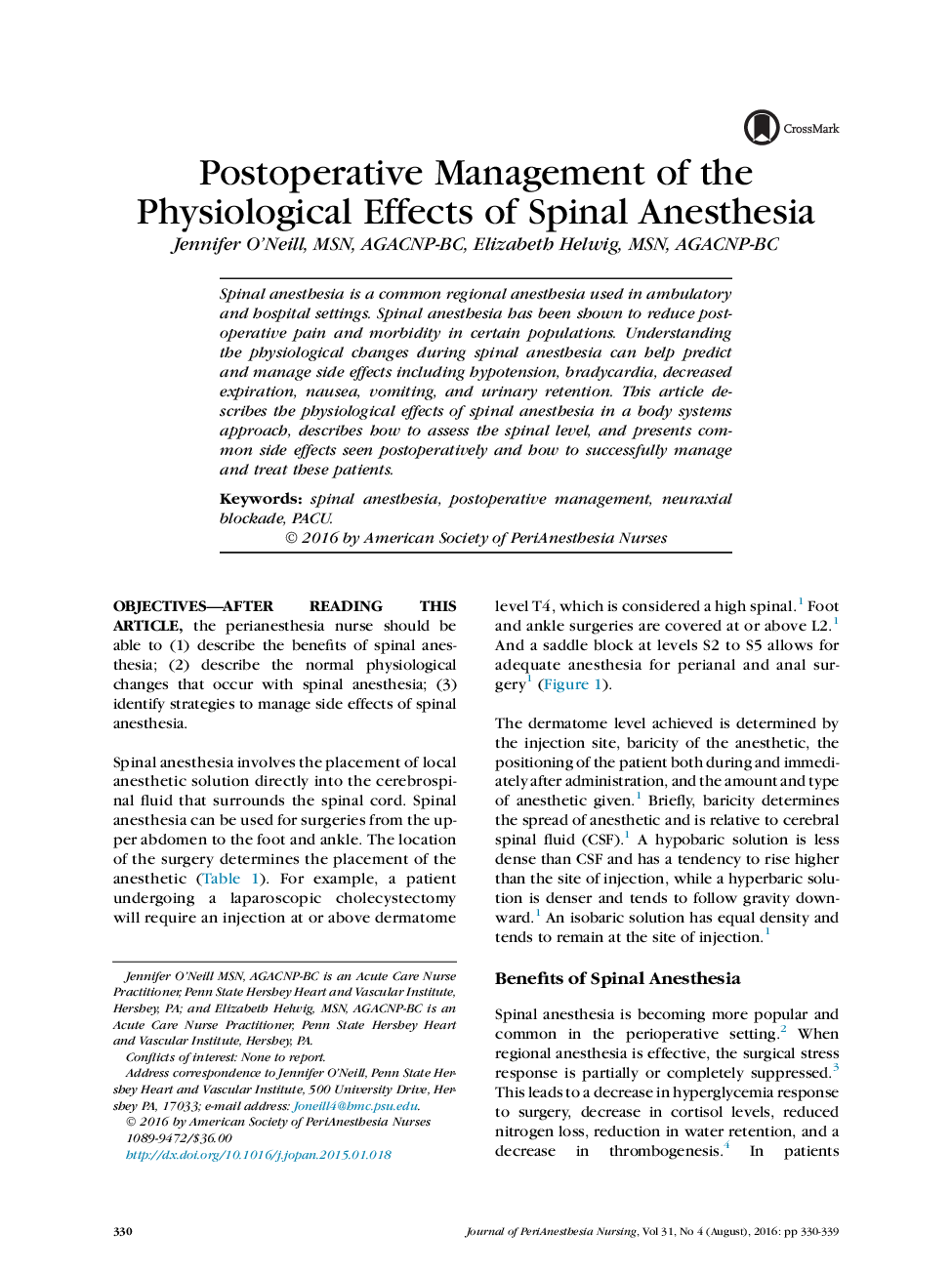| Article ID | Journal | Published Year | Pages | File Type |
|---|---|---|---|---|
| 2669386 | Journal of PeriAnesthesia Nursing | 2016 | 10 Pages |
Abstract
Spinal anesthesia is a common regional anesthesia used in ambulatory and hospital settings. Spinal anesthesia has been shown to reduce postoperative pain and morbidity in certain populations. Understanding the physiological changes during spinal anesthesia can help predict and manage side effects including hypotension, bradycardia, decreased expiration, nausea, vomiting, and urinary retention. This article describes the physiological effects of spinal anesthesia in a body systems approach, describes how to assess the spinal level, and presents common side effects seen postoperatively and how to successfully manage and treat these patients.
Related Topics
Health Sciences
Medicine and Dentistry
Anesthesiology and Pain Medicine
Authors
Jennifer O'Neill, Elizabeth Helwig,
